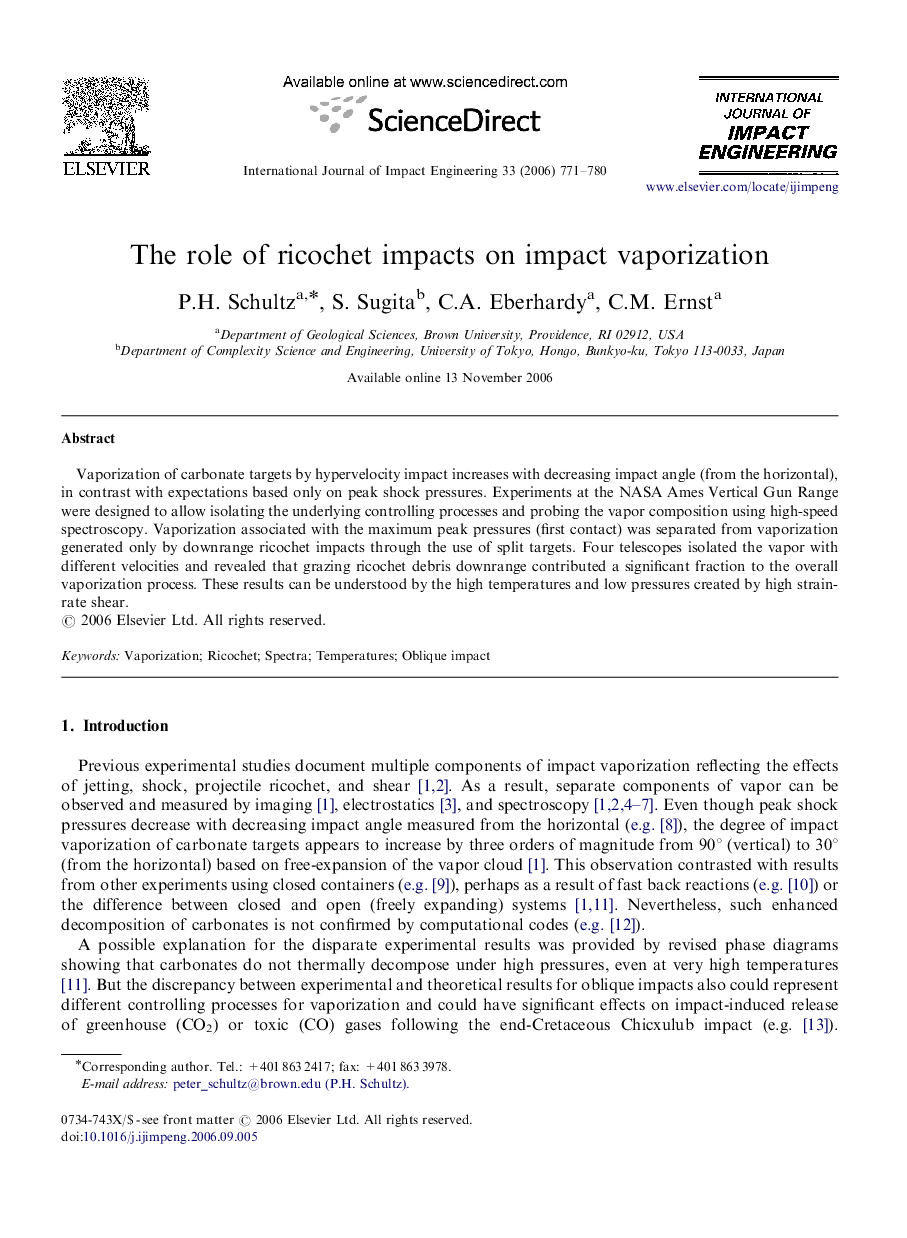| Article ID | Journal | Published Year | Pages | File Type |
|---|---|---|---|---|
| 779642 | International Journal of Impact Engineering | 2006 | 10 Pages |
Vaporization of carbonate targets by hypervelocity impact increases with decreasing impact angle (from the horizontal), in contrast with expectations based only on peak shock pressures. Experiments at the NASA Ames Vertical Gun Range were designed to allow isolating the underlying controlling processes and probing the vapor composition using high-speed spectroscopy. Vaporization associated with the maximum peak pressures (first contact) was separated from vaporization generated only by downrange ricochet impacts through the use of split targets. Four telescopes isolated the vapor with different velocities and revealed that grazing ricochet debris downrange contributed a significant fraction to the overall vaporization process. These results can be understood by the high temperatures and low pressures created by high strain-rate shear.
